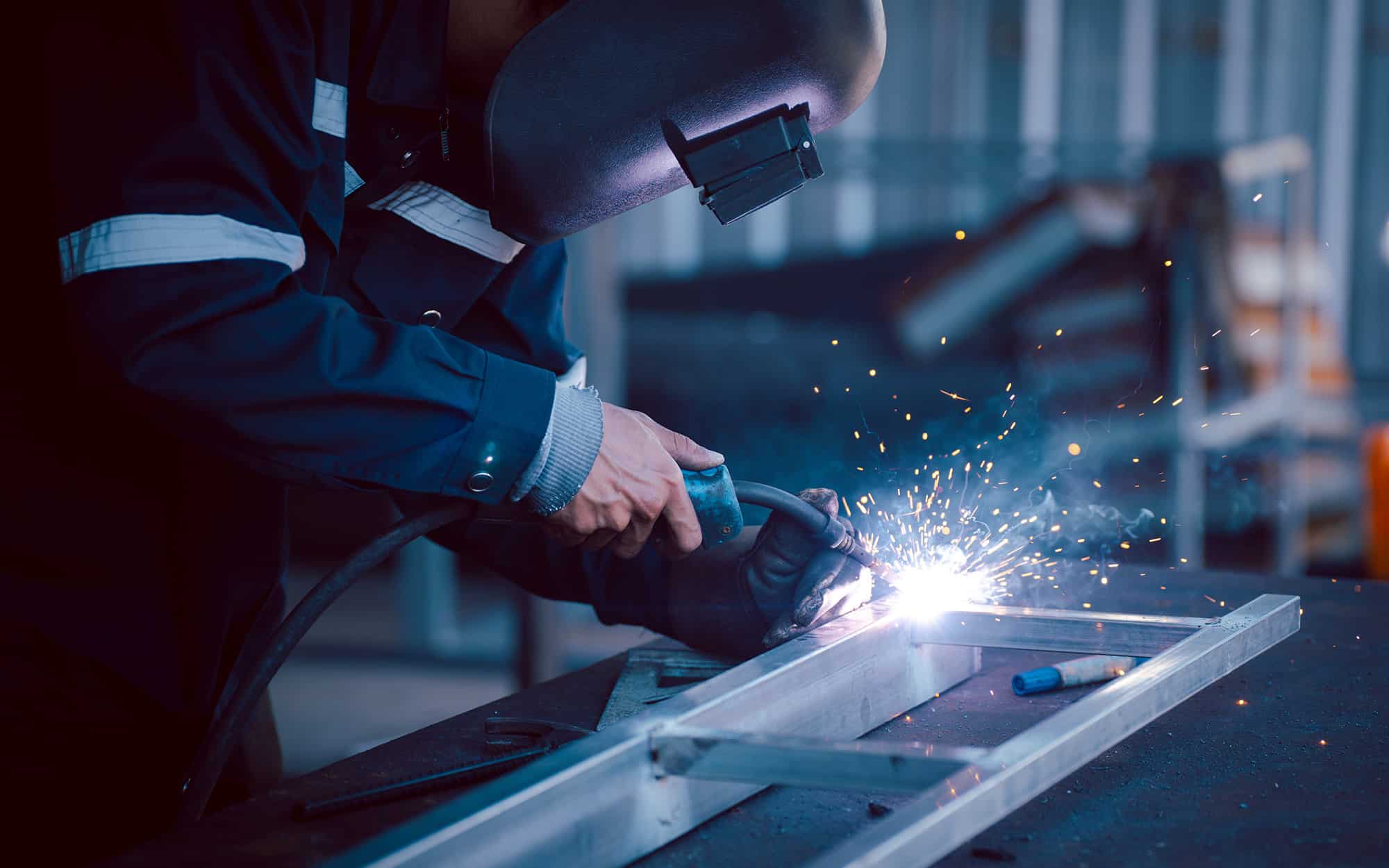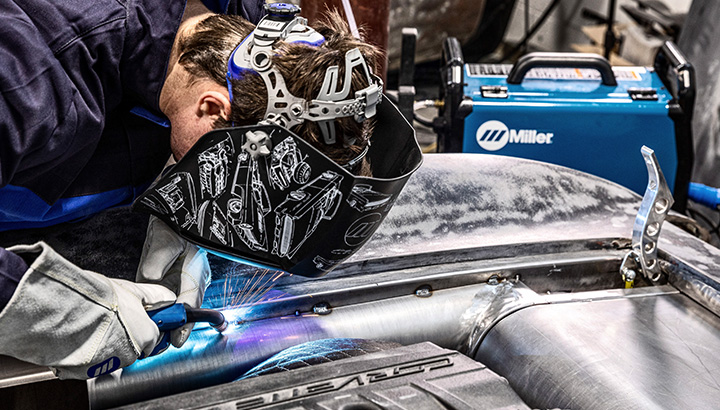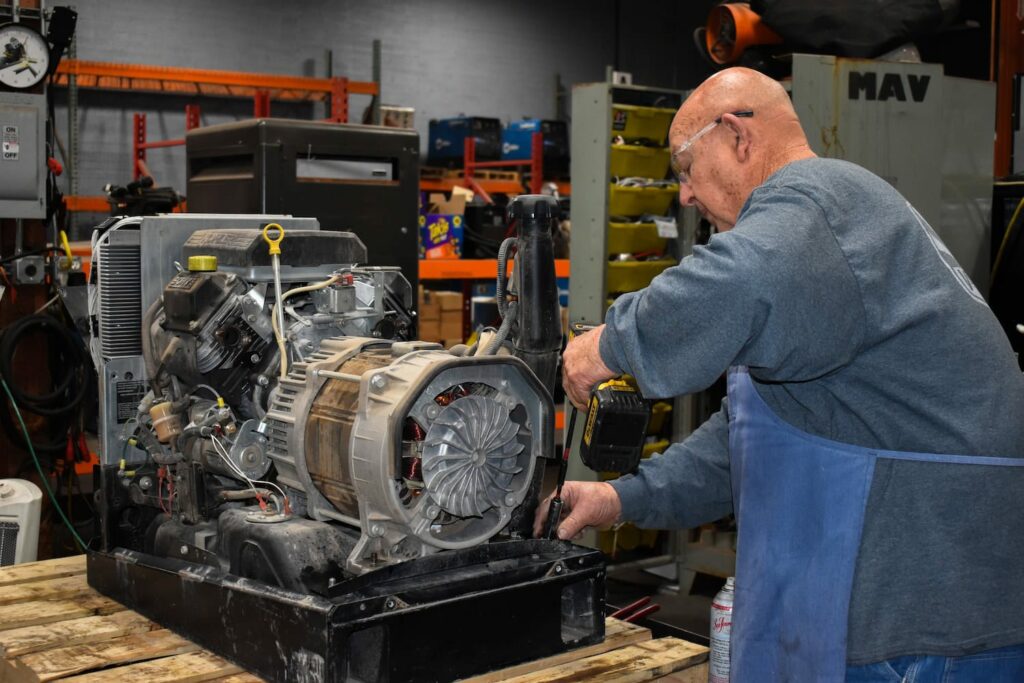Typical Welding Repair Service Issues and Exactly How to Address Them Properly
Welding repairs usually come across a variety of problems that can endanger the honesty of the final product. Common issues include inadequate penetration, porosity, and misalignment, to name a few. Each defect offers unique obstacles that call for certain strategies for resolution. Recognizing these issues is necessary for welders intending to enhance their end results and abilities. This conversation will check out these usual welding fixing problems and reliable methods to address them.
Inadequate Infiltration
Insufficient infiltration happens when the weld metal fails to totally fuse with the base material, leading to weak joints and potential architectural failings. This problem frequently originates from insufficient warm input, inaccurate electrode angle, or improper welding speed. Welders might encounter poor infiltration because of a mistake of the needed criteria for a particular material thickness or kind. Furthermore, contamination on the base product's surface can impede effective bonding, intensifying the problem. To attend to inadequate penetration, welders ought to guarantee suitable setups on their tools and maintain a clean work surface area. Routine evaluation of welds is suggested to determine any deficiencies early, enabling for prompt corrections and the prevention of jeopardized architectural honesty in bonded settings up.
Porosity
Porosity is a common defect in bonded joints that manifests as tiny gas bubbles entraped within the weld metal. This issue can jeopardize the stability of the weld, bring about reduced toughness and possible failing under tension. Belgrade Welding. Porosity usually emerges from contamination, dampness, or incorrect welding strategies, which permit gases to leave into the molten weld swimming pool. To attend to porosity, welders ought to assure appropriate surface preparation, maintain a tidy workplace, and use appropriate welding criteria. Additionally, choosing the ideal filler material and shielding gas can minimize gas entrapment. Regular inspection and testing of welds can assist recognize porosity early, ensuring timely rehabilitative activities are taken, therefore maintaining the high quality and integrity of the bonded structure
Misalignment
Imbalance in welding can develop from different elements, consisting of inappropriate configuration and thermal expansion. Recognizing the origin is crucial for reliable resolution. Several adjustment methods are available to realign parts and ensure structural integrity.
Reasons for Misalignment
Welding misalignment commonly stems from a range of underlying concerns that can jeopardize structural honesty. One key cause is improper fit-up of parts prior to welding, which can lead to gaps and unequal surface areas. Variations in thermal development during the welding procedure can also lead to distortion, especially if the products being signed up with have various coefficients of growth. In addition, inadequate securing and fixturing may stop working to hold components safely in location, resulting in motion throughout welding. Inadequately conserved devices, including welding makers and devices, may present disparities in the weld bead, additional adding to imbalance. Operator mistake, stemming from inadequate training or experience, can additionally play a considerable role in creating misaligned welds.

Correction Techniques Offered
Dealing with misalignment effectively needs a combination of rehabilitative methods tailored to the particular issues at hand. One common approach is making use of components or jigs to hold components in the appropriate position during welding, guaranteeing regular placement. In addition, pre-heating the materials can assist decrease distortion and improve fit-up. For significant misalignment, mechanical realignment methods, such as using hydraulic jacks or clamps, can be utilized to correct the placement prior to welding. Post-weld heat therapy may also be essential to soothe stress and anxieties caused by misalignment. Ultimately, careful examination and adjustment during the arrangement phase can avoid imbalance concerns from ending up being considerable problems, advertising a smoother welding process and improving overall architectural stability.
Distortion
Distortion is a common challenge in welding that can occur from various aspects, consisting of uneven heating & cooling. Comprehending the sources of distortion is vital for implementing effective prevention techniques. Addressing this concern not only boosts structural integrity yet also enhances the overall top quality of the weld.
Sources of Distortion
When subjected to the intense warm of welding, products typically undergo adjustments that can lead to distortion. This sensation mostly emerges from thermal development and tightening during the welding process. As the weld location warms up, the product broadens; upon cooling, it contracts, which can produce interior anxieties. Furthermore, unequal home heating across a workpiece can exacerbate these anxieties, leading to bending or flexing. The kind of product also plays a significant function; steels with differing thermal conductivity and coefficients of expansion might respond differently, bring about unpredictable distortions. Bad joint style and inadequate fixturing can add to imbalance throughout welding, increasing the possibility of distortion. Comprehending these causes is necessary for reliable welding repair service and prevention approaches.
Avoidance Techniques
Reliable prevention techniques for distortion during welding concentrate on managing heat input and guaranteeing proper joint design. Keeping a consistent warm input aids to reduce thermal development and contraction, which can lead to distortion. Using techniques such as preheating the work surface can additionally decrease the temperature gradient, promoting consistent heating. Additionally, picking ideal joint designs, such as T-joints or lap joints, can improve security and minimize tension concentrations. Carrying out correct fixturing to secure the workpieces in area further help in preserving placement during the welding procedure. Lastly, staggered welding series can distribute heat more uniformly, protecting against localized distortion. By applying these approaches, welders can substantially lower the possibility of distortion and boost the general top quality of their welds.
Fracturing
Cracking is an usual issue encountered in welding repairs, typically arising from different variables such as incorrect cooling rates, material selection, or poor joint preparation. The incident of cracks can substantially endanger the stability of the weld, causing potential failures during procedure. To address this problem, welders have to first assess the origin causes, making sure that materials are suitable and appropriately chosen for the specific application. Additionally, controlling the cooling price throughout the welding procedure is vital; fast air conditioning can cause stress and anxiety and result in cracking. Proper joint layout and preparation likewise contribute to minimizing the danger. Implementing Discover More these techniques can boost more weld top quality and sturdiness, inevitably minimizing the possibility of breaking in completed weldments.

Incomplete Combination
A considerable issue in welding fixings is incomplete fusion, which occurs when the weld metal does not sufficiently bond with the base material or previous weld passes - Montana Mobile Welding and Repair Welding. This flaw can lead to weaknesses in the joint, possibly endangering the honesty of the bonded structure. Factors adding to insufficient combination include inadequate warmth input, improper welding technique, and contamination of the surfaces being signed up with. To resolve this issue efficiently, welders should guarantee proper pre-weld cleansing and surface area preparation, as well as adjust their welding specifications to accomplish ample penetration and blend. Regular evaluation during the welding process can additionally assist recognize incomplete combination early, permitting timely rehabilitative steps to boost the general top quality of the weld
Overheating
While welding fixings can improve structural integrity, overheating presents a substantial challenge that can bring about material deterioration. Too much warm throughout welding can alter the mechanical homes of metals, resulting in minimized stamina, increased brittleness, and bending. This phenomenon is specifically critical in high-stress applications where structural dependability is critical. Identifying overheating can include visual evaluations for staining or distortion, in addition to keeping an eye on temperature during the welding procedure. To reduce the risks connected with getting too hot, welders need to employ ideal methods, such as regulating heat input, changing travel speed, and utilizing appropriate filler products. In addition, carrying out pre- and post-weld heat therapies can aid bring back material residential or commercial properties and enhance the total quality of the repair, making certain lasting efficiency and safety.
Often Asked Concerns
What Are the Common Indications of a Welding Flaw?

Exactly How Can I Check My Welds for High quality?
To examine welds for high quality, one can use visual examinations, ultrasonic testing, and radiographic methods. Each method ensures structural stability, recognizes flaws, and validates adherence to defined standards, ultimately enhancing the dependability of the welded joints.
What Safety Precautions Should I Take While Welding?
When welding, one ought to focus on security by wearing appropriate personal protective equipment, making certain correct air flow, protecting flammable products away, preserving a clean workspace, and knowing surroundings to stop crashes and check this injuries.
Can I Fix a Weld Without Redoing the Entire Joint?
Fixing a weld without redesigning the whole joint is feasible, depending on the damages (Montana Mobile Welding and Repair Belgrade). Techniques such as grinding, including filler material, or making use of a welding procedure can efficiently address specific imperfections while protecting the surrounding framework
What Equipment Are Necessary for Effective Welding Repairs?
Necessary tools for reliable welding repair services include a welding machine, cord brush, grinder, protective equipment, clamps, and filler materials. Each tool plays an essential duty in making sure quality and safety and security throughout the repair process. Porosity usually arises from contamination, wetness, or improper welding strategies, which allow gases to leave into the molten weld swimming pool. Badly maintained devices, including welding equipments and devices, might present variances in the weld grain, further contributing to misalignment. When subjected to the extreme heat of welding, materials frequently undergo adjustments that can lead to distortion. Breaking is a typical issue come across in welding repairs, usually resulting from various factors such as incorrect air conditioning prices, product selection, or inadequate joint preparation. A substantial problem in welding fixings is incomplete fusion, which occurs when the weld steel does not effectively bond with the base material or previous weld passes.
Comments on “How to spot and repair weld flaws in Montana Mobile Welding and Repair Belgrade Welding”